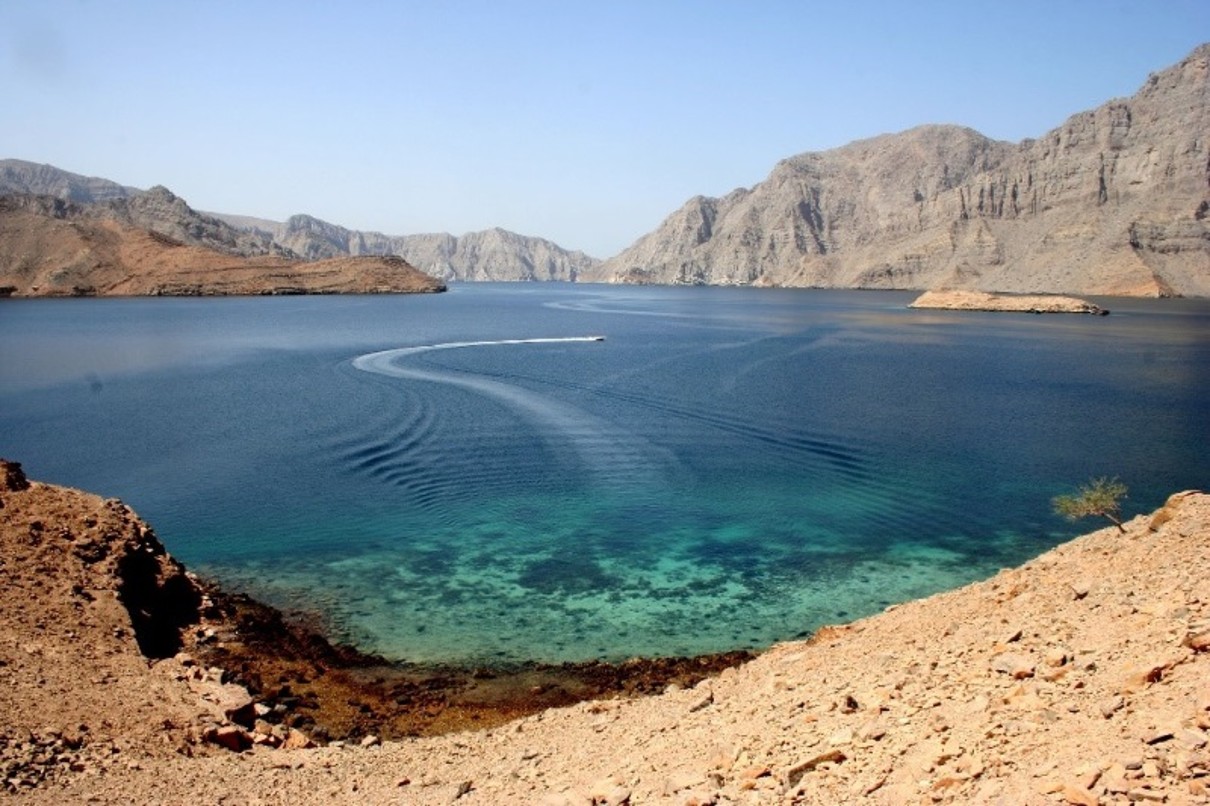Page content
ITB Host Country 2024 Oman: Unrevealed Musandam
In the far north of the Arabian Peninsula, where the jagged cliffs of the Hajar Mountains plunge into the blue waters of the Persian Gulf, lies Musandam. The Omani exclave plays an important economic role due to its strategic location on the Strait of Hormuz, one of the busiest shipping lanes in the world. The geology of the region has produced beautiful fjord landscapes. You won't find any hustle and bustle or even tourist crowds here – instead, travelers enjoy excursions into the mountains and on the water.
A ride in an off-road vehicle up to the 2,087-meter-high Jebel Harim guarantees pure adrenaline. With its 1,800 square kilometers, the Musandam peninsula is just under half the size of Majorca. To get from sea level into the mountains visitors pass steep slopes through a charming landscape of hairpin bends, along deep gorges, bizarre rock faces and hidden valleys. Jebel Harim is also known as the "mountain of the women" – as they once sought protection from pirates in the caves of the massif while their husbands were fishing or trading. If you want to gain altitude with your own muscle power, you can explore the mountain panorama by mountain bike, too.
At sea level, the landscape shows from a completely different perspective. Deeply cut bays, which are often only accessible by boat, evoke memories of Nordic fjord landscapes. The most popular means of transportation on water is the dhow, a traditional Omani wooden boat – and a comfortable one, too. Nestled on lush cushions underneath sun sail, travelers traverse the glassy waters, passing secluded fishing villages and lonely beaches, while the skipper serves fruit, dates and sweet tea for refreshment. The 17-kilometer-long Khor Shimm is one of Musandam’s most stunning fjords. The rocks along its shore were once seabed and provide insights into the earth's history: here, where the Arabian continental plate meets the Eurasian one, rock faults and folds show up in zigzag and wave patterns in a wide variety of shades. A refreshing stop for a swim reveals the fascinating underwater world: snorkelers discover a colourful variety of fish; with a bit of luck, even turtles and rays appear in the crystal-clear waters. Dolphins often accompany the boats on their trips through the fjords. Visitors can choose between excursions lasting several hours, full-day trips and tours with overnight stays.
In addition to the impressive nature of the peninsula, encounters with the local population await. Around 30,000 people live in Musandam – mainly from fishing, agriculture, trade and handicrafts. Tourism is still relatively young here; before 1992 the peninsula was a restricted military area and could not be visited. In the port city of Khasab, it gets particularly lively when the fishermen return to shore in the afternoon and loudly advertise their freshly caught fish. At this time, many traders from the UAE are present, too, who will offer the purchased goods the next morning on their local markets. Date growing also plays an important role in the coastal oasis. There are still families on Musandam who are not sedentary and live on the coast or in the mountains, depending on the season. Agriculture is practiced on tiny walled terraced fields, boldly planted on ridges. Moreover, only on Musandam the jirz is made – an axe with intricate carvings and engravings whose origins date back to the Bronze Age; a counterpart to the traditional scimitar khanjar that adorns Oman's coat of arms.
For additional information on the Official Host Country of ITB Berlin 2024, visit: www.experienceoman.om




_xxxldesk43.jpg)